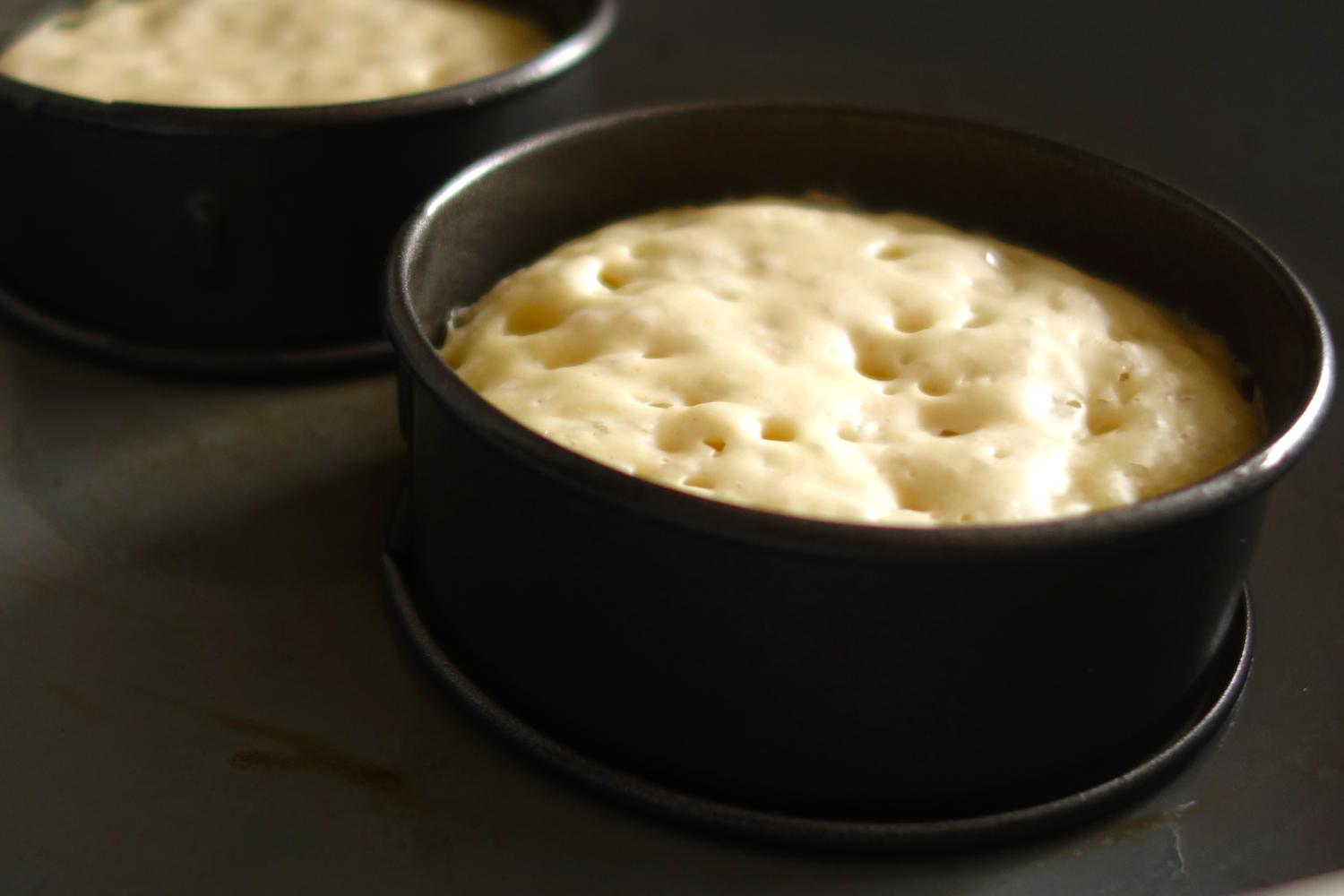Crumpets remind me of holidays in Cornwall and rainy English afternoons by the fire. Traditional and comforting, with simple and easy-to-come-by ingredients. When I first made crumpets, I was a little surprised to find that there are some fairly strong opinions on what type of flour to use to achieve the best texture, and it really comes down to personal preference. Some prefer using strong white flour, which provides a chewier texture and stronger structure for the famous crumpet honeycomb holes. Others favour plain flour, for a softer crumb. Many cooks suggest blending the two in order to reap some of the benefits of each. The strong white flour contributes to a decent honeycomb structure, and the addition of the plain prevents it from becoming too chewy. I’ve adopted this approach, but erred on the side of using a higher proportion of strong flour to plain, because I quite like my crumpet to have a good structure and a bit of bite.
EQUIPMENT – I use crumpet rings which are 8 1/2 cm in diameter.
Makes 12 crumpets.

